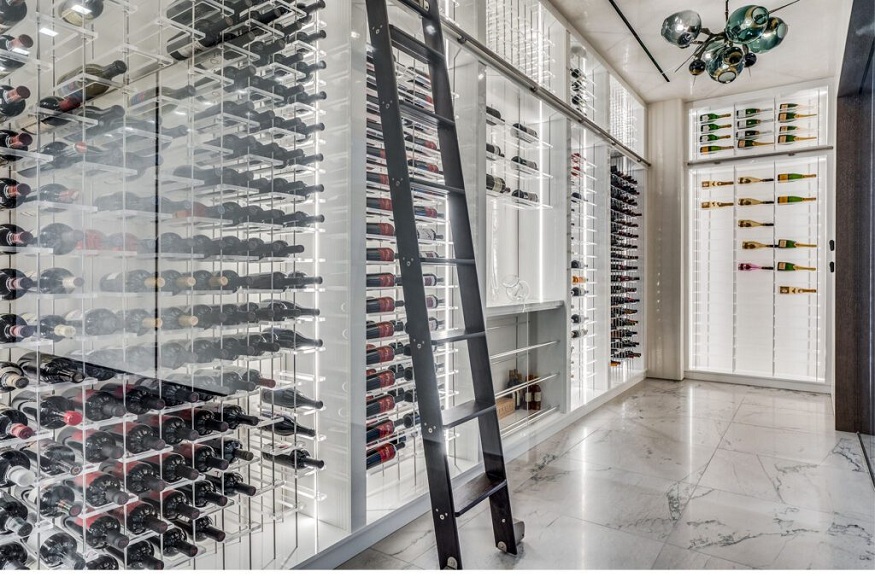From the rich ruby of a Cabernet Sauvignon to the pale gold of a crisp Sauvignon Blanc, each wine possesses a unique character that deserves to be showcased with reverence. In the commercial world, where first impressions are paramount, the choice of glass isn’t merely functional – it’s an art form, a critical element in elevating the wine experience and capturing the consumer’s imagination. Commercial glass, whether in the form of elegant bottles or precisely crafted stemware, acts as a silent storyteller, revealing wine’s inherent beauty and inviting drinkers to savor its every nuance.
The relationship between wine and glass is a centuries-old dance, evolving from crude clay amphorae to the sophisticated vessels we know today. This evolution reflects a growing appreciation for wine’s delicate complexities and the understanding that the container itself plays a pivotal role in its presentation, preservation, and ultimate enjoyment.
The Bottle: A Canvas for Brand and Preservation
The wine bottle is the first point of contact between the wine and its admirer. It’s a brand’s handshake, a silent promise of the liquid within. Commercial glass bottles are not just containers; they are carefully designed artifacts that serve multiple critical functions:
- Visual Appeal and Brand Identity: The shape, color, and clarity of a glass bottle are fundamental to a wine’s visual identity. An elegant Bordeaux bottle conveys tradition, while a sleek, modern design might suggest innovation.Clear glass lets the wine’s color shine through, which is important for rosé or brighter white wines. Darker glass, often amber or deep green, not only hints at the wine’s style but also performs a vital protective role.The bottle, adorned with its label, becomes a miniature billboard, communicating the winery’s story and allure.
- Protection from Elements: Glass is the preferred choice for wine preservation due to its inertness.Unlike plastic or certain metals, glass does not react with the wine, ensuring that the flavors and aromas remain untainted and true to the winemaker’s intent.More importantly, colored glass, particularly green and amber, offers crucial protection against harmful UV light.UV rays can cause “light strike,” a chemical reaction that damages a wine’s delicate compounds, leading to off-flavors and premature aging.Commercial glass wine display manufacturers meticulously engineer bottles to provide this vital shield, safeguarding the wine’s integrity from the moment it leaves the cellar to when it’s poured into a glass.
- Optimal Aging Environment: For wines destined for aging, the glass bottle, combined with a quality cork or screw cap, creates a controlled micro-environment. The impermeability of glass prevents oxygen from seeping in too rapidly, allowing for the slow, gentle oxidation essential for complex flavor development. While innovations in alternative packaging exist, traditional glass bottles remain the gold standard for wines intended for long-term cellaring, a testament to their proven ability to preserve and enhance the wine’s character over time.
Innovation and Sustainability in Glass
The commercial glass industry is not static; it continues to innovate, seeking to enhance both the aesthetic and functional properties of wine containers and glassware, while also addressing environmental concerns.Lightweight glass bottles are becoming increasingly popular, reducing carbon footprints during transport without compromising quality. Recycling initiatives for glass are robust, making it a highly sustainable packaging choice. Furthermore, advancements in glass composition and manufacturing processes continue to push the boundaries of design, allowing for unique bottle shapes and exceptionally thin, yet strong, stemware that elevates the sensory experience.
Conclusion: A Legacy of Elegance and Craft
The symbiotic relationship between wine and commercial glass is a testament to the power of thoughtful design. From the protective embrace of the bottle that preserves its essence to the perfectly sculpted glass that unveils its aromatic symphony, glass plays an indispensable role in showcasing wine’s profound beauty. It transforms a simple drink into an experience, inviting contemplation, connection, and pure enjoyment. In every clink of glasses and every swirl of liquid, commercial glass stands as an elegant, silent partner, allowing the true artistry of wine to shine through.

